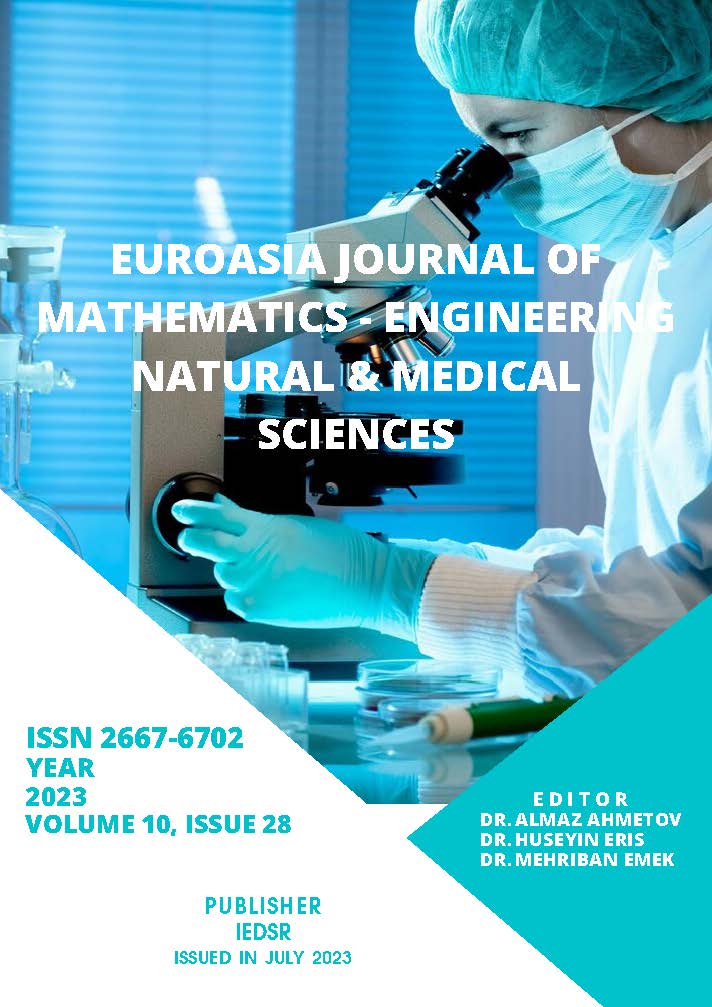An Economizer Design
DOI:
https://doi.org/10.5281/zenodo.8238098Keywords:
Waste Heat, Heat Recovery, Heat Exchanger, Economizer, Numerical AnalysisAbstract
The rapid increase in the world population, the development of technology, innovations and the increase in the development of many countries in parallel with industrialization have also increased the energy demand. Effective and efficient use of decreasing energy resources is of great importance. In this study, economizer design, theoretical calculations and numerical analysis were made by using the heat of the waste flue gas from the furnace. In the design, the data of the combustion test furnace used in a cable company were used. The mean logarithmic temperature difference and ε - NTU methods were used in the economizer design calculations. As a result of the calculations, a 6-pass and 5-row economizer with a surface area of 288.24 m2 and consisting of 120 self-finned serpentines was designed. The efficiency of the heat exchanger used in the economizer was calculated as 0.71. The water in the 500-liter boiler tank at 20°C was increased to 60°C in 435 seconds with the designed economizer. When the economizer is included in the system, it is seen that the flue gas temperature decreases from 71.2°C to 50°C. Thus, the flue gas will be cooled and thrown into the atmosphere at a lower temperature. The designed and theoretically calculated economizer was analyzed in the ANSYS CFD program with the finite element method. It has been seen that the results of the theoretical calculations and the numerical analysis are in harmony.
References
Abeykoon C. (2020). Compact heat exchangers – Design and optimization with CFD. International Journal of Heat and Mass Transfer 146 (2020), 118766. www.elsevier.com/locate/ijhmt
Arani A. A. A. ve Moradi R. (2019). Shell and tube heat exchanger optimization using new baffle and tube configuration. Applied Thermal Engineering 157 (2019), 113736. www.elsevier.com/locate/apthermeng
Aravindkumar A. (2014). CFD Analysis Of Gas Flow Behavior In Varios Economizer Duct. International Journal Of MC Square Scientific Research Vol.6, No.1 Nov 2014, Mechanical Engineering, MookambigaiCollege of Engineering.
Dinçer İ. (1997). Heat Transfer Food Cooling Applications, Taylor&Francis, Washington, DC.
Genceli O. F. (1999). Isı Değiştiricileri. Birsen Yayınevi.
Gözcü O. (2019). Türkiye İklim Koşullarındaki Veri Merkezlerinin Soğutulmasında Ekonomizer Kullanımının Enerji Tasarrufu Ve Ekonomik Potansiyel Değerlendirmesi (Yüksek Lisans Tezi), İstanbul Teknik Üniversitesi Fen Bilimleri Enstitüsü, İstanbul.
Hamillton I. G., Steadman P. J., Bruhns H., Summerfield A. J. ve Lowe R. (2013). Energy efficiency in the british housing stock: Energy demand and the Homes Energy Efficiency Database. Energy Policy 60 462–480. Erişim adresi: http://www.elsevier.com/locate/enpol
Judt W. ve Bartoszewicz (2018). Numerical Analysis of A Heat Transfer in Economizer Dedicated for 250 kW Power Solid Fuel Heating Boiler. Journal of KONES Powertrain and Transport, Vol. 25, No. 2 2018.
Koç E. ve Şenel M. C. (2013). Dünyada ve Türkiye’de Enerji Durumu–Genel Değerlendirme Erişim adresi: https://www.researchgate.net/publication/314280679
Kukulka D. J. (1981). Thermodynamic and Transport Properties of Pure and Saline Water (MSc Thesis), State University of New York at Buffalo.
Kuvel A. (2005). Baca Gazlarından Atık Isı Geri Kazanımının Deneysel Olarak İncelenmesi (Yüksek Lisans Tezi), Yıldız Teknik Üniversitesi Fen Bilimleri Enstitüsü, İstanbul.
Parmaksızoğlu C. ve Çeteci Ö. (1999). Isı Değiştiricisi Tasarımı, IV. Ulusal Tesisat Mühendisliği Kongresi ve Sergisi.
Saari J. (1981). Heat Exchanger Dimensioning. Lappeenranta Unıversıty of Technology Faculty of Technology, LUT Energy.
Downloads
Published
How to Cite
Issue
Section
License
Copyright (c) 2023 Euroasia Journal of Mathematics, Engineering, Natural & Medical Sciences

This work is licensed under a Creative Commons Attribution-NonCommercial 4.0 International License.

